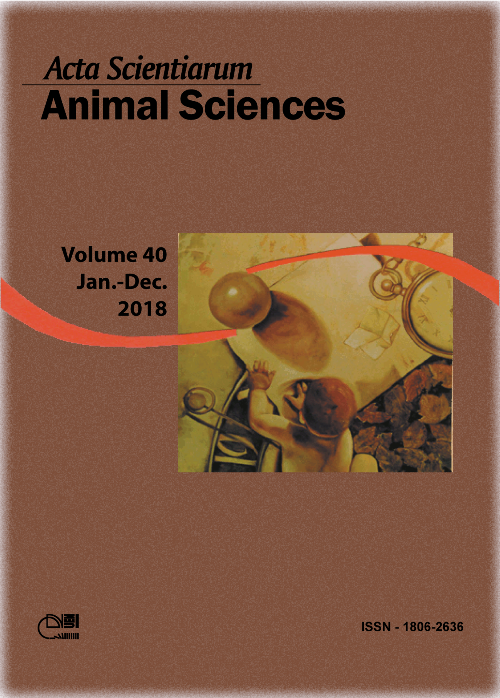<b>Chemical-bromatological composition and in vitro ruminal kinetics of sugar cane silage with maniçoba
Abstract
The objective this study was to evaluate the effect of maniçoba supplementation in sugar cane silage with respect to chemical-bromatological composition and the in vitro degradation kinetics of the silage. This experiment was conducted in a completely randomized design with four treatments (maniçoba levels: 0, 20, 30, and 40%) and six repetitions. Silage samples were analyzed for their chemical-bromatological composition, digestible energy, metabolizable energy, total digestible nutrients, in vitro gas production and degradability parameters. The silage with higher inclusion level had better bromatological composition (p < 0.05) than the silage without maniçoba for CP, NDF, ADF and MM (6.49, 56.64, 38.66 and 4.52% versus 2.21, 70.96, 49.95 and 2.78%). Higher ME content (2.35 MJ kg-1 MS versus 1.85 MJ kg-1 MS), DE (2.87 Mcal kg-1 MS versus 2.25 Mcal kg-1 MS) and TDN (65.16% versus 51.11%), respectively. The highest values for gas production were also observed in silage with added maniçoba due to higher NFC content (34.87%). With an increase in the proportion of maniçoba, there was an increase in the soluble a fraction, b fraction, and thus a higher effective degradability of dry matter (46.56%). The addition of maniçoba improves the nutritive value of sugarcane silage.
Downloads
DECLARATION OF ORIGINALITY AND COPYRIGHTS
- I Declare that current article is original and has not been submitted for publication, in part or in whole, to any other national or international journal.
The copyrights belong exclusively to the authors. Published content is licensed under Creative Commons Attribution 4.0 (CC BY 4.0) guidelines, which allows sharing (copy and distribution of the material in any medium or format) and adaptation (remix, transform, and build upon the material) for any purpose, even commercially, under the terms of attribution.
Read this link for further information on how to use CC BY 4.0 properly.








































